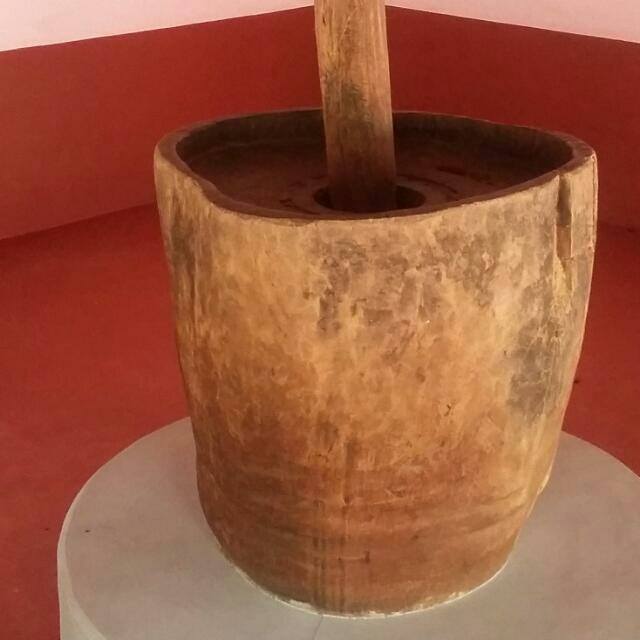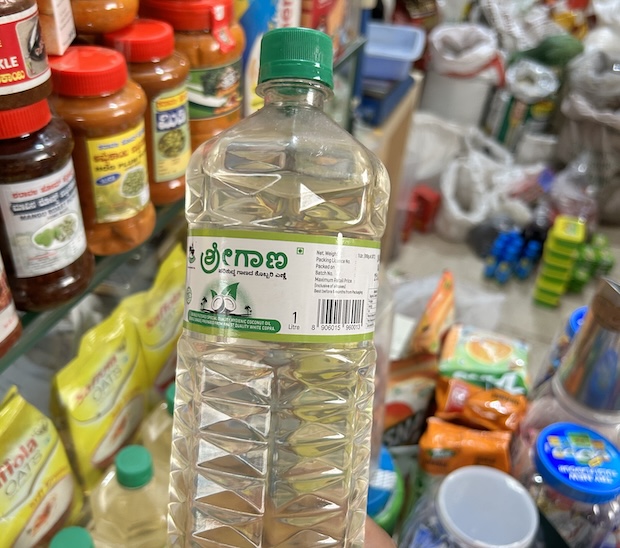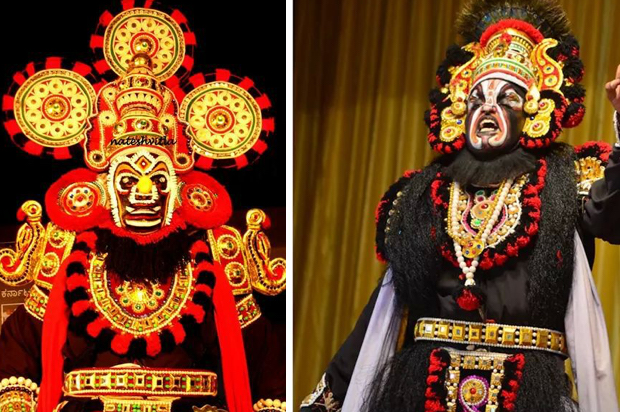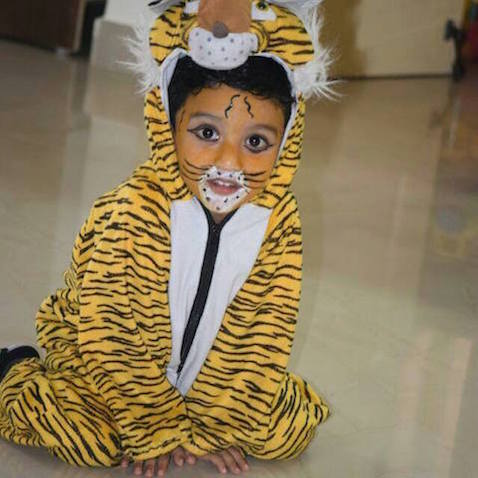There is a story regarding migration of Vaniyas from Kaveripoompatinam. One day two merchants came and gave some pearls to the king there. The king happily recieved them and asked his people including the 'Manthri' to make 'sara' necklace using the pearls. No one came forward to prepare the sara by using them because the pearls had no holes to pass the thread to make it a necklace. Finally the king called a Vaniyan and ordered him to prepare the sara by passing thread through them. The king gave him 24 hours time and declared that if he fails he would be punished. Vaniyan received them and went home. He called his daughter an told her about the kings order and somehow to make a 'sara'. She took them and went to her room. Then the intelligent Vaniya girl brought some sugar and gum. She arranged the pearls in a row and put the gum mixed with the sugar to the touching points of each of the pearls and went out of the room. Next morning when she entered the room the sugar was completely eaten by the ants and they had mad holes from one end to another. She took a thread and made a 'sara'. She gave it to her father. He went to the king and handed over the 'sara' to the king. On seeing the 'sara' the king was extremely happy and praised the girl for her intelligence. He wanted to marry the girl. So he conveyed his desire to her father. But as the Vaniyas are the people of high self-respect, the father rejected the kings proposal and decided to move out of the country. After that the king lost interest in everything. By the time the famine affected the Kaveripoompattinam. These Vaniyas moved from there towards South and eastern coastal areas and settled in various parts of the Southern region including Kolothnad of Kerala.
In Kolothnad, that is the present North Malabar, these people are called as Vaniyar and they were running a very rich profession. When their population increased, a section of Vaniyas migrated from Kolothnadu to the North of Chandragiri river. In these areas these Vaniyas are called as Gaaniga in Tulu langauage and in Kanndada language. Their main profession is extracting oil from coconut and gingelli. There exists a folk story in the area about the origin of the caste profession. The story runs like this. During the period of Vanavas Bheema the second of Pandavas adopted a profession of pressing the dried coconut in the hand mill (gana) and sell the oil for his livelihood. One day while he was pressing the coconut in the mill ie gana, he realised that he was not able to extract the oil as the coconut had dried beyond limit. He continuously tried to get oil but his efforts were in vain. Meanwhile a woman returning after taking bath reached there. Bheema asked her help to press the coconut, as he wanted to take some rest. Immediately she went near the mill and started to press the coconut. While she was feeding the coconut to the mouth of the mill, the water drops from her wet hair fell on the dried coconut enabling it to yield oil. Oil started ooze out. Bheema was very happy and as a reward to her sincere effort he handed over the mill to the woman and told her to continue the profession.

Thus the profession was established and the people who were doing these profession were called as Ganigas. 'Gana' in kannada means oil mill and 'iga' is a derivative suffix, means 'one who owns a mill'. Hence the name Gaaniga came to the oil mongers. The chief languages of the area are Tulu and Kannada. But the Vaniya community called Ganiga in the area, speak Malayalam. Kannada and Tulu Ganiga are also there in that area. In Kannada they are called as 'Ganiga' and in Tulu they are called as 'Ganige'. The term Ganiga was originally given to Kannada oil mongers and the same name came to Vaniyas in that area because of the Vaniyas were also doing the same profession of pressing the coconut in the oil mill gana and both share same ancestry and the local language is Kannada. Though the community is called as Ganigas in Kannada language, they are also called as Baniyan or Baniyar corresponding to the Vaniyan or Vaniyar in native Malayalam. Most of these Vaniyas or Ganigas use the term 'Patali' as a common caste name or surname after their personal name. Eg. Rama Patali, Kechu Patali.
It is believed that the term 'Patali' was given to Ganigas by Lord Shiva. Vaniyas or Ganigas were very loyal persons, very sincere in their work and industrious. One day Shiva came to the earth as an old brahmin to test the loyalty of the Ganigas. When Shiva came there the Vaniyan was pressing the coconut in the mill. He was moving the Gana or oil mill using only a single bull. The person who was chasing the bull around the mill on sitting the wooden plank of the 'Gana' was singing a 'pattu' or a song in a particular tone with high pitch to encourage the bull to walk round the mill. Enchanted by the 'pattu' or melodious song of the Ganiga or the Lord Shiva stood in a corner of the 'Gana', listening to the 'pattu'. 'Ganiga' sang a number of songs one after the other. Lord Shiva was imersed himself in the mesmerising music of the 'vaniyan' or 'ganiga'and had forgotten to test the Vaniyan. As a result finally Lord Shiva blessed the loyal 'Ganiga' to be a good 'paattu' singer ie a 'Patali' and returned. Thus Ganigas or Vaniyas got one more feather in their cap and proudly started to keep 'Patali' as their surname. Gradually it became a caste name and all the people in the community started using it. Tulu and Kannada Ganigas do not use the term Patali as their caste name. The Vaniyas or Ganigas having their ancestral roots in Kasaragod and old South Kanara district of Karnataka and who under the Perne Muchiot Bhagavathi temple do not keep marital relationship with Kannada and Tulu Ganigas.
Vaniyas/Ganigas resemble with those of Tuluvas found in the South Kanara. In dress and ornaments also they differ from Vaniyas of Kolothnad. Vaniyas are far behind in their social, economic and educational status. Until recently men wore traditional 'mundu' upto their knee, put a shawl on the shoulder and used to put a country hat, made up of the cover of the coconut palm leaf, on his head. It is also called a paala toppi in Malayalam. This was the typical dress he used when he goes out. Wearing shirts by male members and blouses by female members was the addition of later years in the dress style.
Traditional service of Vaniyas/Ganigas is quite essential in the society. Oil is one of the essential commodity in human life. Oil monger used to provide it to the needy people. Also he used to provide oil to the temples to lit the lamps. Thus Vaniya could occupy a good position in the society. The land lords of various communities especially Bunts and Brahmins made these people as their tenants by providing them house and properties.They worked very hard to provide oil to the society. In olden days there was barter system in the society. Vaniyas used to give oil to the people and received paddy or rice and other food items in exchange. Thus the Vaniyas could interact with all section of people and could keep very good relationship with them. When the mechanised oil mills have come up, the entire Vaniya community lost their cast profession. Thus they were forced to find some other means for the living. Though most of them poor initially now community is improving socially and economically. Now many of the community members are pursuing business in coconut oil generation business, selling pure coconut oils. The vaniyas coming under Perne Muchilot Bhagavathi temple speak a colloquial malayalam language.


Community which was distant from fast-growing world lacked education.But now many of the young students are pursuing higher education in various fields. We find people working in various fields such as Engineering, Medical, Defence, Administration, Police, Education. But there are many students of poor families of Vaniya community who find difficult to pursue quality education. Vaniya/Ganiga people actively participate in Yakshagana ,a theater form that combines dance, music, dialogue, costume, make-up, and stage techniques with a unique style and form famous in South canara. Many of the artists have serviced in number of famous "Mela"s for years. Late Bannada Mahalinga is one such example. Girls and boys now learn dance,bharatha nattym,music. Even in the area of sports many players have come up.


They practice ancestral style of worship on their own but not with the help of brahmin priests. They cremate their dead bodies. Their pollution period is 11 days. And their purification is performed by the 'Thelippukkaran' who belongs to Malayali Barbar community. On 11th day, there is a 'Uttharakriya' in which all the relatives and community people gather. They perform some 'Chadangu'(rituals). The 'chadangu' will be over with the purification and there will be a feast to all in this connection. When a child is born in the Vaniya family they observe 11 days 'Soothika' pollution. On the 10th day, a Malayali washer woman (vannathi) comes with 'Mattu' or washed clothes. A purifying ceremony will take place then. A small feast is also arranged to all the relatives gathered.
By, Shri Dr. M. Rama,Thiruvanathapuram